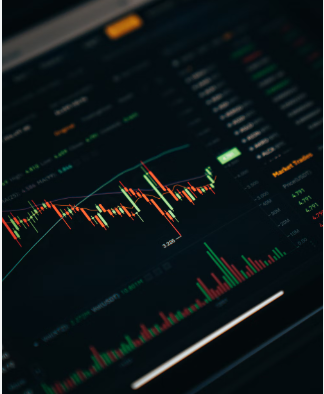CFD trading is an increasingly popular way of investing in financial markets. A CFD, or contract for difference, is a financial instrument that allows traders to speculate on the price movements of various assets without actually owning them. With CFD trading, you can trade a wide range of financial markets such as stocks, currencies, commodities, and indices.
In this blog post, we will cover the basics of CFD trading. We’ll start by exploring what a CFD is, why it’s becoming so popular, and how it differs from other trading strategies. We’ll then look at some common terms and concepts used in CFD trading, such as leverage and margin. Finally, we’ll provide you with some tips to help you get started with CFD trading.
What is a CFD?
A CFD is a contract between two parties to exchange the difference between the opening and closing prices of the underlying asset. If the price of the asset increases, the buyer will earn a profit, while the seller will incur a loss. Conversely, if the price of the asset decreases, the seller will earn a profit, while the buyer will incur a loss.
Why is CFD trading becoming so popular?
One of the main reasons for the popularity of CFD trading is the ability to trade a wide range of financial markets. This means that traders can find opportunities at any time of the day or night. Additionally, Cfds offer flexible trading conditions, enabling traders to place trades with low minimum deposits and take advantage of high leverage.
How does CFD trading differ from other trading strategies?
CFD trading differs from other trading strategies in several ways. Firstly, with Cfds, traders don’t actually own the underlying assets. Instead, they simply speculate on their price movements. Secondly, cfds allow traders to profit from both rising and falling markets, whereas traditional trading strategies typically only allow for long positions.
Understanding Leverage and Margin
Leverage is a tool used by traders to magnify their profits by allowing them to control larger positions with a smaller amount of capital. However, leverage can also magnify losses. Traders need to be careful when using leverage, as high leverage can result in significant losses if the market moves against them.
Margin, on the other hand, is the amount of money that a trader needs to hold in their account to maintain their position. This amount is determined by the broker and varies depending on the underlying asset, the size of the position, and the level of leverage.
Tips for Getting Started with CFD Trading
If you’re new to CFD trading, here are some tips to help you get started:
Understand how Cfds work and the risks involved.
Create a trading plan and stick to it.
Start with a demo account to practice your trading skills.
Choose a reputable broker with competitive trading conditions.
Always use risk management tools such as stop-loss orders.
Conclusion:
CFD trading is an exciting and profitable way to invest in financial markets. However, it’s important to understand the risks involved and to develop a trading plan that suits your financial goals and risk tolerance. By following the tips outlined in this blog, you’ll be well on your way to becoming a successful CFD trader. Remember to always conduct your research and analysis before making any trades and to use risk management tools to protect your capital.



